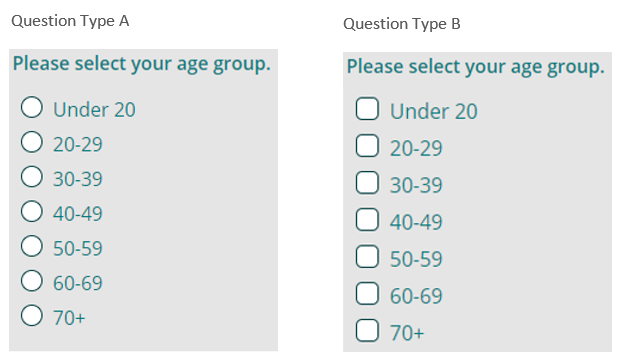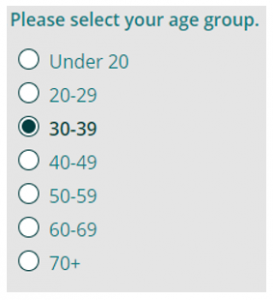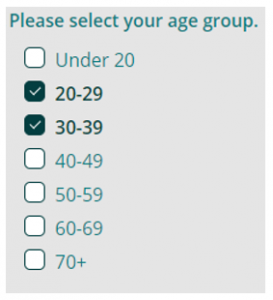Are the wrong question types ruining your survey?
You’ve got to have the right questions, but question type matters more than you might think. I take every online survey that comes my way — satisfaction surveys from hotels I’ve stayed in, interest surveys from community organizations I volunteer for, online polls on social media — and one of the most common mistakes I see is use of the wrong question type. Just this tiny misstep can jeopardize your whole project and leave you with flawed data.
It’s no surprise that questions are an important part of building a survey. But with all of the possible question types to select from, how do you know you’re using the best one?
We’ll start simple. Consider the following example:

You’re right. They’re nearly identical. But which is right?
Hopefully you chose example A. Single-select question types are useful when the participant should be selecting only one answer option, such as their age group.
Example B is a Multiple-select question type and is useful when the participant should select multiple answer options from a list. Age doesn’t make sense here.
Accidentally using multi-select questions when you need single answers leaves you vulnerable to unwittingly collecting bad data and thereby ruining your ability to report accurate findings.
When To Use Single vs. Multi
Not only do you have to determine when to use single vs multi-select, you have to know when to use each type of single-select question type, like, Radio Button, Horizontal Radio Button, Drop-Down, and Rating Scale. A good rule of thumb for picking the right single-select question type is to use a radio button or horizontal radio button when a question has eight or fewer answer options to choose from. Participants can view all options as once, and answers can be arranged in columns as well. If participants have many more responses to choose from, use a drop down to simplify the display.
Conversely, you should use a multi-select question when participants could or will have more than one answer. For example, “How did you hear about us? Please select all that apply.” Sometimes, there’s more than one right answer! Plus, you can always add answer constraints, making it mandatory to select an exact, minimum, or maximum number of answer options.
The wrong question type can confuse participants and may lead to participation drop-out, thus reducing your response rate. Making the right choice of questions in a survey will not only enable you to gather responses but also help you collect the most meaningful data for analysis.
Interested in learning more? Click here to discover some of our more advanced question types.








